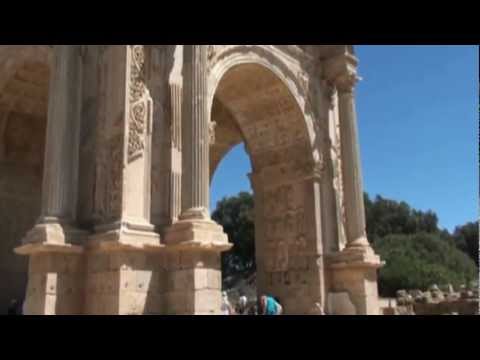
Situated on the coast of the Mediterranean Sea in modern-day Libya, Leptis Magna stands as one of the most impressive and well-preserved Roman archaeological sites in the world. Known originally as Leptis Magna Perfa Tripolitanii, this ancient city offers a unique glimpse into Roman urban life, architecture and history. This guide will help you plan your journey to explore this magnificent UNESCO World Heritage site.
#### History of Leptis Magna
Leptis Magna was originally founded by the Phoenicians in the 7th century BCE, but it reached its zenith under Roman rule. It became particularly prominent in the 2nd century CE when local-born Lucius Septimius Severus became emperor of Rome. Under Severus’ reign and that of his successors, the city was lavishly embellished with public monuments, a harbor, marketplaces, residential districts, and religious temples.
#### Getting to Leptis Magna
Located approximately 130 kilometers east of Tripoli, getting to Leptis Magna can be somewhat challenging due to ongoing political instability in Libya. Travelers should check current travel advisories from their respective governments before planning their trip. The nearest major airport is Tripoli International Airport. From there, travelers can hire a car or join an organized tour group for transportation to the site.
#### What to See at Leptis Magna
– **Arch of Septimius Severus**: This imposing arch stands as a grand entrance into the city and is intricately decorated with inscriptions and sculptures that glorify Emperor Septimius Severus.
– **The Hadrianic Baths**: One of the largest Roman bath complexes outside Italy, these baths showcase sophisticated engineering and are complete with underfloor heating systems.
– **The Nymphaeum**: An exquisite example of Roman water architecture; this monumental fountain was central to religious rituals.
– **Theatre**: The well-preserved theatre at Leptis could seat up to 6,000 spectators and offers a stunning view of the Mediterranean.
– **Basilica**: Built in honor of Emperor Septimius Severus by his sons Caracalla and Geta, this building served multiple administrative and judicial functions.
#### Travel Tips
1. **Hire a Guide**: To fully appreciate Leptis Magna’s historical context and architectural nuances, consider hiring a knowledgeable local guide.
2. **Wear Comfortable Clothing**: Be prepared for lots of walking around extensive ruins; wear comfortable shoes and protective clothing against sun exposure.
3. **Respect Local Customs**: Libya is predominantly Muslim; dressing modestly will help you respect local customs and traditions.
4. **Safety First**: Given Libya’s recent past regarding political instability, always prioritize safety by staying informed about current conditions on the ground through official channels or trusted news sources.
5. **Photography Restrictions**: Check for any photography restrictions; while personal photography is generally permitted across most tourist sites for non-commercial purposes unless specified otherwise.
#### Best Time to Visit
The best time to visit Leptis Magna is during spring (March to May) or fall (September to November), when temperatures are cooler but still pleasantly warm for exploring outdoors.
#### Conclusion
Leptis Magna offers an unparalleled window into ancient Rome’s architectural prowess and urban planning sophistication right in North Africa’s heartland. While travel logistics may present challenges due to geopolitical circumstances in Libya, visiting this exceptional historical site can be an enlightening experience for those who undertake it responsibly with all precautions considered.
